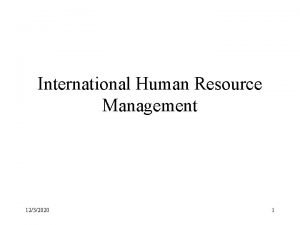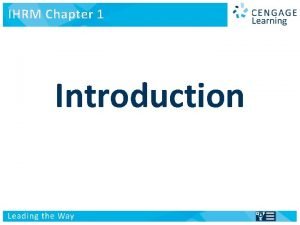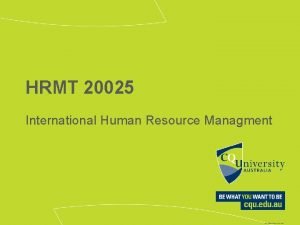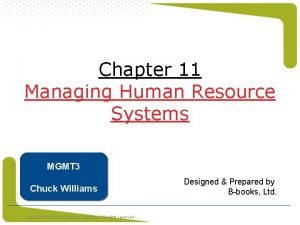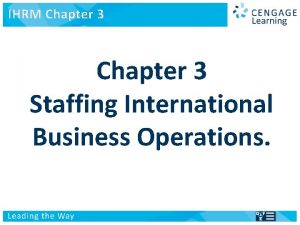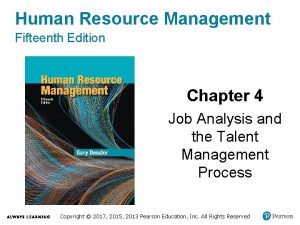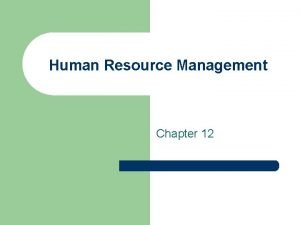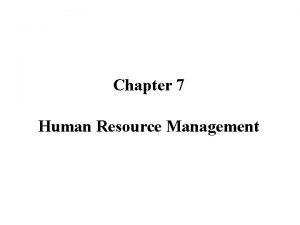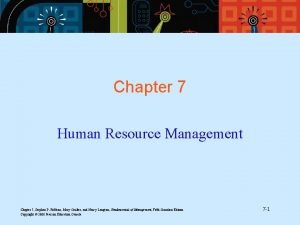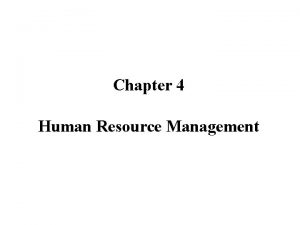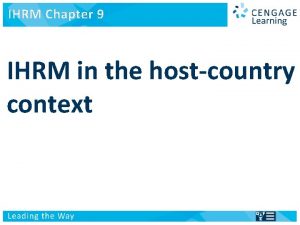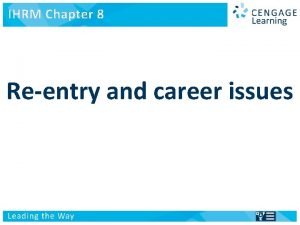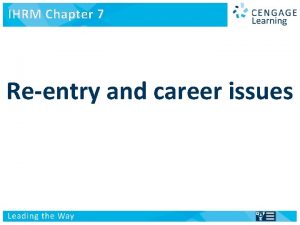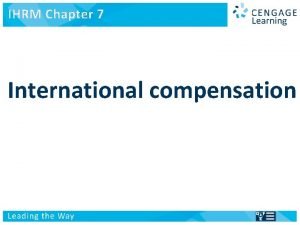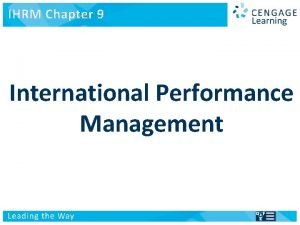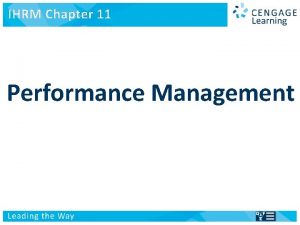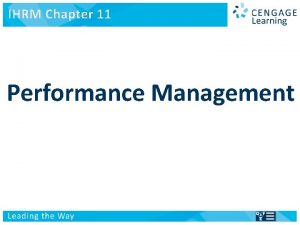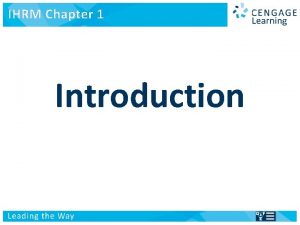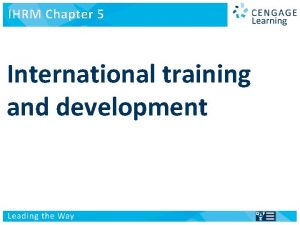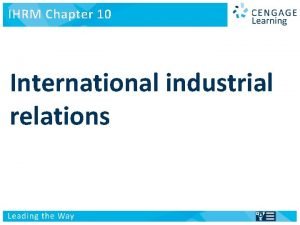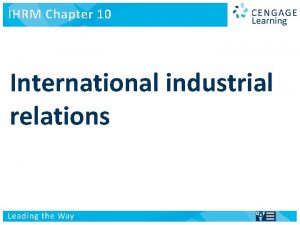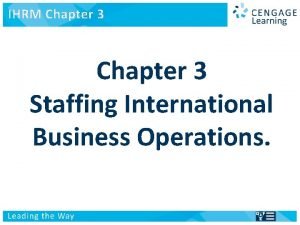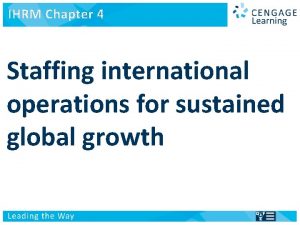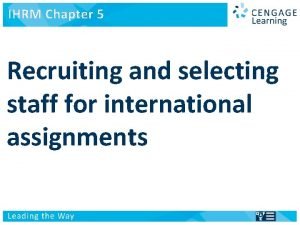IHRM Chapter 2 International Human Resource Management Managing



















- Slides: 19

IHRM Chapter 2 International Human Resource Management Managing people in a multinational context The organizational context

Discussion Questions 1. Firms typically goes through stages as they grow internationally – what stages will Winch-It undertake / follow as it plans for overseas operations ? 2. How might these stages affect the H R function ? 3. What are the specific HRM challenges for an organisation the size of Winch-It in planning for overseas ? 4. Country of origin influences the firm’s approach to organisation structure. Given Asia as a target, what types of organisation structure might be expected ? v IHRM Chapter 2 2

Chapter Objectives We learn: • Structural responses to international growth • Control and coordination mechanisms, including cultural control. • Effect of responses on human resource management approaches and activities. v IHRM Chapter 2 3

Terms bamboo network firm M&A clan control born global social capital matrix structure corporate culture heterarchy structure transnational structure multinational network chaebols greenfield building approach v IHRM Chapter 2 4

Figure 2 -1 v Management demands of international growth IHRM Chapter 2 5

The path to global status Organizational structures change due to: 1. Strain imposed by growth and geographical spread. 2. The need for improved coordination and control across business units. 3. The constraints imposed by host-government regulations on ownership and equity. v IHRM Chapter 2 6

Figure 2 -2 v Stages of internationalization IHRM Chapter 2 7

Figure 2 -3 v Export department structure IHRM Chapter 2 8

Figure 2 -4 v Sales subsidiary structure IHRM Chapter 2 9

Figure 2 -5 v International division structure IHRM Chapter 2 10

MNEs’ two major issues of structure 1. The extent to which key decisions are to be made at the parent-country headquarters or at the subsidiary units (centralization versus decentralization). 2. The type or form of control exerted by the parent over the subsidiary unit. v IHRM Chapter 2 11

Figure 2 -6 a v Global product division structure IHRM Chapter 2 12

Figure 2 -6 b v Global area division structure IHRM Chapter 2 13

Figure 2 -7 v Global matrix structure IHRM Chapter 2 14

International matrix structure is difficult Matrix is all but unmanageable because of: 1. Dual reporting, which leads to conflict and confusion. 2. The proliferation of communication channels which creates informational logjams. 3. Overlapping responsibilities, which produce turf battles and a loss of accountability. 4. The barriers of distance, language, time and culture, which often make it very difficult for managers to resolve conflicts and clarify confusion. v IHRM Chapter 2 15

Figure 2 -8 v The networked organization IHRM Chapter 2 16

The multi-centered networked organization Management involves less hierarchical structure and features 5 dimensions: 1. Delegation of decision-making authority to appropriate units and levels. 2. Geographical dispersal of key functions across units in different countries. 3. Delayering of organizational levels. 4. De-bureaucratization of formal procedures. 5. Differentiation of work, responsibility and authority across the networked subsidiaries. v IHRM Chapter 2 17

Figure 2 -9 v The role of MNE culture of origin IHRM Chapter 2 18

Figure 2 -10 v Control strategies for multinational firms IHRM Chapter 2 19
 International hrm definition
International hrm definition International human resource management dowling 6th edition
International human resource management dowling 6th edition Similarities between domestic and international hrm
Similarities between domestic and international hrm International resource services
International resource services Time management in human resource management
Time management in human resource management Hrm in retail management
Hrm in retail management Defintion of hrm
Defintion of hrm Chapter 2 human resource management
Chapter 2 human resource management Chapter 9 human resource management
Chapter 9 human resource management Chapter 11 human resource management
Chapter 11 human resource management Chapter 1 introduction to human resource management
Chapter 1 introduction to human resource management Human resources introduction
Human resources introduction Human resources department structure
Human resources department structure Human resource management lecture chapter 1
Human resource management lecture chapter 1 Types of expatriates in ihrm
Types of expatriates in ihrm Human resource management chapter 4
Human resource management chapter 4 Function of hrm
Function of hrm Chapter 7 human resource management
Chapter 7 human resource management Chapter 7 human resource management
Chapter 7 human resource management Human resource management chapter 4
Human resource management chapter 4
